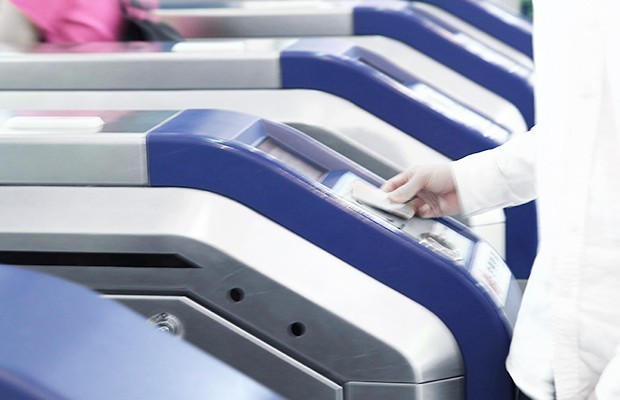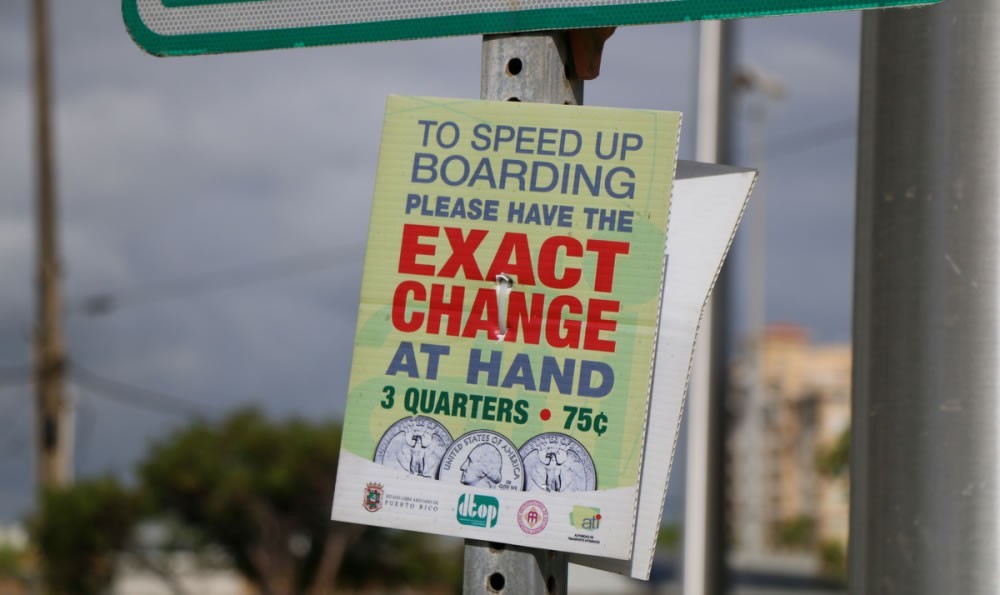Last updated January 2017
When John Jones became the Transit Manager at Charlottesville Area Transit (CAT), he was tasked with solving their key challenges, such as to:
- Reduce fraud from counterfeit day passes
- Improve the passenger experience and allow them to pay for their trip in the manner that was convenient for them
- Get more accurate reporting and data to understand who was riding their buses and when - in particular, the percentage of riders from the University of Virginia
- Decrease the cost of fare collection - and start the path to move towards a cashless system
We sat down with John to learn about his experience and give you best practice advice for agencies looking to solve these same challenges.
Trapeze: How did you get started in the transit industry?
John: I’ve been in transit longer than I care to remember. I started in the parts room many, many years ago. I moved to the shop floor one night when they were short on people. Then, I spent 18 years of my career working as a fleet manager. After that I went to college, got a management degree and moved into mid-level management with a transportation contractor and I’ve been in mid-level or general manager roles since 1998.
When I started with CAT, one of the things they wanted me to do when I walked in the door was update our fare collection technology – we had very dated fareboxes that weren’t capable of doing anything but taking cash.
Trapeze: Why were you interested in switching your fare collection provider?
John Jones: One of our biggest challenges was reducing counterfeit day passes and reducing fraud. We would have to search various suppliers for odd colored paper not available in the mainstream to print the day passes on. It was time consuming and we experienced a lot of counterfeit with this.
We also wanted to improve the customer experience and make it easier for them to purchase tickets and take transit. We didn’t offer anything other than day passes – which wasn’t a good experience for the customer.
Trapeze: You provide transit to students and faculty at your local university, the University of Virginia. How did that factor into your decision to switch systems?
John Jones: Students and faculty ride our transit – but how many people do we transport? From which stops? We didn’t know. Now, we have accurate ridership data that tells us who is actually using our services and at which stops. The university pays us based on the number of faculty and students they think ride the buses – but now we can know for sure.
Trapeze: You went live in the summer of 2015. What was the process like?
John Jones: It took some time to get the system up and running. But now that we’ve had it for a year, the results are positive, it’s working better and the passengers are happy.
Trapeze: What are some of the benefits you’ve seen since then?
John Jones: We’ve eliminated the problem with counterfeit day passes because now the farebox prints the day pass right there. It’s bar coded and not only is it good for one day, it’s good for a 24-hour rolling period, which is more acceptable for the customer.
Customers are happy with the smart media. Before, if they bought a 30-day pass, they were restricted and it would be active from when they bought it. Now, it’s valid for 30 days from the first time they use it. It’s more user friendly and it can tell them how many days they have left. We’re also working on letting passengers reload passes online.
Trapeze: Improving your ridership data was a big draw for you. How has that helped you with scheduling?
John Jones: Now we have more accurate ridership data. We can tell which stop people got on at and it’s a better way to plan our services. We’ve been able to look at eliminating stops that get zero ridership. Now we can say we’re not picking anyone up at that stop and it’s not just anecdotal anymore with a driver saying I’ve never picked up anywhere there. Now, it’s the farebox saying that so we can take off that stop, it makes us run better and it helps us out quite a bit.
Trapeze: You’ve even started offering new longer term passes since going live. How come?
John Jones: We never had the ability to sell more than day passes before; now we have 30-day, 90-day and annual passes, all valuable for rolling periods. It helps us out so we can count less cash on the bus. And people are more accepting of smart media and are more willing to purchase the longer passes because it’s more convenient for them.
Since customers are able to use debit or credit to purchase passes at customer service, there’s less labor involved in counting cash – we’re not completely cashless but we’re going in that direction. Before we had two employees counting cash for about three hours a day; now we have one employee for just an hour a day.
Trapeze: What are your recommendations for other agencies thinking of adopting a new automatic fare collection system?
John Jones: It’s a big change to make, especially for some agencies who have no experience with electronic fareboxes, who are coming straight from manual fareboxes. You need to be prepared for the change.
Definitely make sure they test all the technology well ahead of going live with it. Get a sack of coins, bills and cards and go around feeding those things and making sure they’re taking money, generating media properly and registering smart media when it’s tapped.
Be careful when you put that farebox in – make sure that everything is adjusted right, make sure that you have technicians trained to make adjustments in the field which we do need to do from time to time. There are some problems that can crop up – we had problems with vaults not opening or dumping correctly so make sure technicians know how to adjust all that.
It’s also very important to establish procedures. A lot of our maintenance guys will pull fare with their maintenance ID, but it won’t register for the smart report, so you need to make sure everyone is aware of the procedures.
Customer education is key too. We had a lot of people who needed help –they didn’t know where to hold their university ID and where to scan it. A good public information effort is key to a successful implementation.
Thanks for sharing your insights, John, and we can’t wait to see what the future holds for CAT. Want to learn more about John’s experience and how he solved his fare collection challenges? Here's a one-page summary!
Vicky Abihsira is the Director, Integrated Marketing at Trapeze Group where she owns the product marketing strategy and integrated marketing strategy including all our marketing channels such as web, blog, podcast, email, social, and PR.
Originally from Toronto, she now lives in Miami with her husband and two kids.
 Bus
Bus Rail
Rail Paratransit
Paratransit


